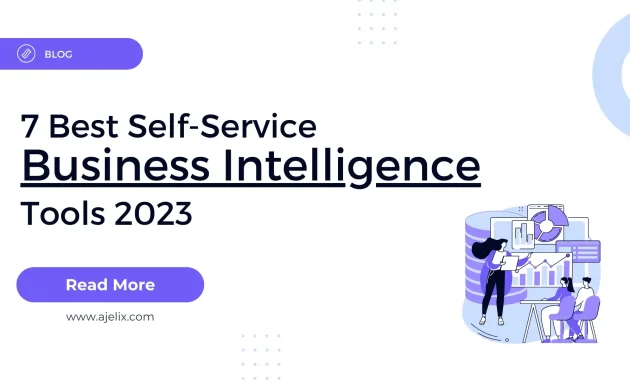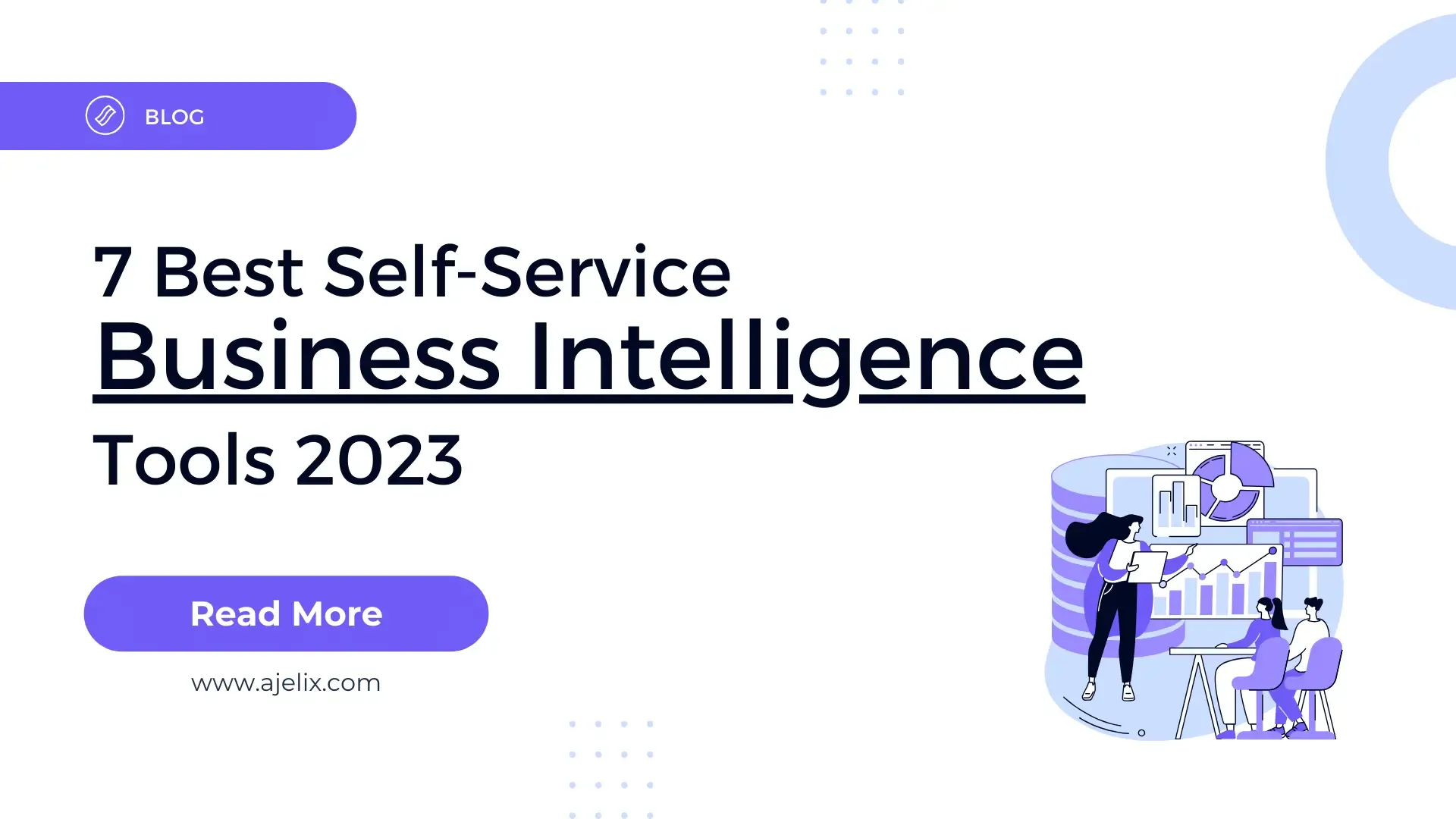
Master Metrics: Unleashing the Power of Self-Service Business Intelligence Software
In today’s data-driven world, the ability to quickly understand and interpret complex information is paramount. Businesses of all sizes are drowning in data, but without the right tools, this data remains just that – data. It doesn’t translate into actionable insights. This is where self-service business intelligence (BI) software steps in, empowering users across an organization to master metrics and make informed decisions.
This article delves into the world of self-service business intelligence software, exploring its benefits, features, and best practices. We’ll examine how these tools are revolutionizing the way businesses operate, enabling employees to access, analyze, and visualize data without relying on IT or specialized data analysts. By the end, you’ll understand how to master metrics using these powerful platforms.
The Evolution of Business Intelligence
Traditional BI relied heavily on IT departments and data specialists. These teams would extract, transform, and load (ETL) data, create reports, and distribute them to end-users. This process was often slow, cumbersome, and lacked the agility needed to respond to rapidly changing business needs. The bottleneck in this system frequently hindered timely decision-making. Furthermore, this method was costly and required significant technical expertise.
The advent of self-service business intelligence software marked a significant shift. These tools empower users to connect to various data sources, create their own dashboards, and generate custom reports. This democratization of data analysis allows for greater flexibility and responsiveness. Users gain the ability to explore data at their own pace, uncovering insights that might otherwise remain hidden.
Key Benefits of Self-Service BI
Self-service business intelligence software offers a multitude of advantages for businesses:
- Faster Decision-Making: Users can access and analyze data in real-time, leading to quicker identification of trends and opportunities.
- Improved Data Literacy: These tools make data more accessible and understandable, fostering a data-driven culture across the organization.
- Reduced Reliance on IT: Business users can perform their own analysis, freeing up IT resources for other critical tasks.
- Cost Savings: By empowering users, organizations can reduce their reliance on expensive data analysts and consultants.
- Enhanced Collaboration: Many platforms offer features for sharing dashboards and collaborating on insights.
- Increased Agility: The ability to quickly adapt to changing market conditions is crucial for success.
Core Features of Self-Service BI Software
To effectively master metrics, a self-service BI platform needs to offer a range of core features:
- Data Connectivity: The ability to connect to various data sources, including databases, spreadsheets, cloud applications, and more.
- Data Preparation: Tools for cleaning, transforming, and shaping data to ensure accuracy and consistency.
- Data Visualization: A wide array of charts, graphs, and maps to present data in an easy-to-understand format.
- Interactive Dashboards: Customizable dashboards that allow users to explore data and track key performance indicators (KPIs) in real-time.
- Reporting: Capabilities to generate and share reports with colleagues and stakeholders.
- Advanced Analytics: Some platforms offer advanced analytics features, such as predictive modeling and statistical analysis.
- Mobile Access: Access to data and dashboards on mobile devices is increasingly important.
Choosing the Right Self-Service BI Software
Selecting the right self-service business intelligence software is crucial for success. Consider these factors:
- Ease of Use: The platform should be intuitive and easy to learn, even for users with limited technical expertise.
- Scalability: The software should be able to handle growing data volumes and user bases.
- Data Source Connectivity: Ensure the platform supports all the data sources your organization uses.
- Security: Robust security features are essential to protect sensitive data.
- Integration: The software should integrate with your existing business systems.
- Cost: Consider the total cost of ownership, including licensing fees, training, and support.
- Features: Does it offer the features you need to master metrics?
Best Practices for Mastering Metrics
To effectively master metrics with self-service business intelligence software, follow these best practices:
- Define Clear Objectives: Before you start analyzing data, define your goals and the key metrics you want to track.
- Choose the Right Metrics: Select metrics that are relevant to your business objectives and provide actionable insights.
- Clean and Validate Your Data: Ensure your data is accurate and consistent to avoid misleading conclusions.
- Visualize Data Effectively: Use appropriate charts and graphs to communicate your findings clearly.
- Create Interactive Dashboards: Design dashboards that allow users to explore data and drill down into details.
- Share and Collaborate: Share your insights with colleagues and stakeholders to foster a data-driven culture.
- Provide Training and Support: Train your users on how to use the software and provide ongoing support.
- Regularly Review and Refine: Continuously review your dashboards and reports to ensure they remain relevant and effective.
- Focus on Actionable Insights: Don’t just collect data; use it to inform decisions and drive improvements.
- Embrace Data Literacy: Foster a company-wide culture of data literacy.
Real-World Applications
Self-service business intelligence software is used across various industries and departments. Here are some examples:
- Sales: Track sales performance, identify top-performing products, and analyze customer behavior.
- Marketing: Analyze marketing campaign performance, track website traffic, and measure customer engagement.
- Finance: Monitor financial performance, track expenses, and identify cost-saving opportunities.
- Operations: Optimize supply chain management, track production efficiency, and identify bottlenecks.
- Human Resources: Analyze employee performance, track employee turnover, and manage recruitment efforts.
These are just a few examples. The possibilities are endless. These tools empower users to master metrics across all facets of a business.
The Future of Self-Service BI
The future of self-service business intelligence software is bright. We can expect to see:
- Increased Automation: AI and machine learning will play a larger role in automating data analysis and generating insights.
- Enhanced Collaboration: Platforms will offer more features for collaboration and knowledge sharing.
- Improved Data Governance: Data governance features will become more sophisticated, ensuring data quality and security.
- Greater Accessibility: BI tools will become even easier to use, making them accessible to a wider range of users.
As technology evolves, the ability to master metrics will become even more critical for business success. The use of self-service business intelligence software is essential for anyone looking to stay ahead of the curve.
Conclusion: Embracing the Data Revolution
Self-service business intelligence software is no longer a luxury; it’s a necessity. Businesses that embrace these tools can gain a significant competitive advantage. They can master metrics, make better decisions, and drive growth. By following the best practices outlined in this article, you can empower your organization to unlock the full potential of its data and achieve lasting success. The ability to effectively master metrics is now a core competency. It is key to navigating the data revolution.
[See also: Understanding Data Visualization Best Practices] [See also: Choosing the Right BI Tool for Your Business] [See also: How to Build a Data-Driven Culture]

